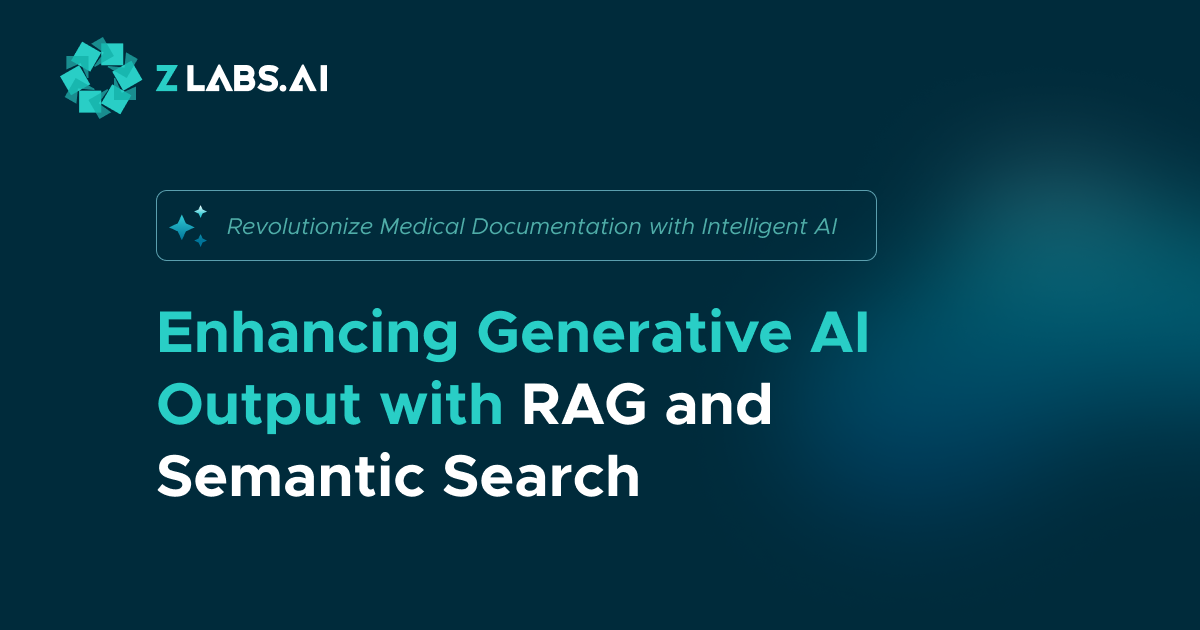Generative AI Unleashed: RAG & Semantic Search for Enhanced Results
The main challenge with integrating generative AI (GenAI) lies in token limits and latency when handling large custom datasets. Various GenAI models, such as those from OpenAI and Mistral, exist. However, to generate accurate and contextually relevant results from extensive custom data, it's necessary to restrict the prompt by including only pertinent portions of the dataset. Two effective techniques for this purpose are Retrieval-Augmented Generation (RAG) and Semantic Search. Let's delve into how these technologies can significantly improve the output of generative AI.

What is Retrieval-Augmented Generation (RAG)?
Retrieval-Augmented Generation (RAG) is an innovative approach that combines generative AI with information retrieval systems. In essence, RAG enhances generative AI by incorporating external knowledge bases to provide more accurate and context-rich responses.
How RAG Works
- Query Generation: When a user inputs a query, the generative model formulates an initial response.
- Information Retrieval: The system retrieves relevant documents or data from external databases or knowledge sources based on the query.
- Augmented Generation: The retrieved information is then used to refine and enhance the initial response, resulting in a more informed and comprehensive output.
Benefits of RAG
- Increased Accuracy: By accessing external knowledge, RAG can provide more precise and contextually appropriate responses.
- Up-to-Date Information: Integration with real-time databases ensures the information is current and relevant.
- Depth of Content: Leveraging a wide range of sources enriches the generated content with diverse perspectives and detailed insights.

Semantic Search: A Complementary Tool
While RAG significantly boosts the capabilities of generative AI, semantic search further refines the retrieval process by understanding the meaning and context behind the queries and documents.
How Semantic Search Works
- Natural Language Understanding: Semantic search interprets the intent and context of the user's query beyond simple keyword matching.
- Contextual Matching: It identifies and retrieves documents that semantically match the query, ensuring relevance and context alignment.
- Enhanced Retrieval: By focusing on the meaning and relationships between words, semantic search retrieves more pertinent and contextually accurate information.
Benefits of Semantic Search
- Improved Relevance: Results are more aligned with the user's intent, improving the quality of the retrieved information.
- Context-Aware Retrieval: Understanding the context ensures that even nuanced queries receive accurate responses.
- Better User Experience: Users receive more meaningful and contextually appropriate results, enhancing satisfaction and trust in the system.
Synergizing RAG and Semantic Search
The true power of enhancing generative AI output lies in the synergy between RAG and semantic search. By integrating these two technologies, we can achieve unparalleled improvements in AI-generated content.
Combined Workflow
- Initial Query Handling: The generative AI processes the user's input to create a preliminary response.
- Semantic Analysis: Semantic search interprets the query to understand its intent and context.
- Document Retrieval: Relevant documents are retrieved based on semantic matching.
- Augmented Generation: The generative AI uses the retrieved information to produce a refined and context-rich response.

Conclusion
The integration of Retrieval-Augmented Generation and semantic search marks a significant advancement in the field of generative AI. By leveraging these technologies, we can create AI systems that not only generate coherent and contextually relevant text but also provide accurate, up-to-date, and detailed responses. As AI continues to evolve, the combination of RAG and semantic search will undoubtedly play a crucial role in enhancing the quality and utility of AI-generated content, opening new horizons for innovation and application.